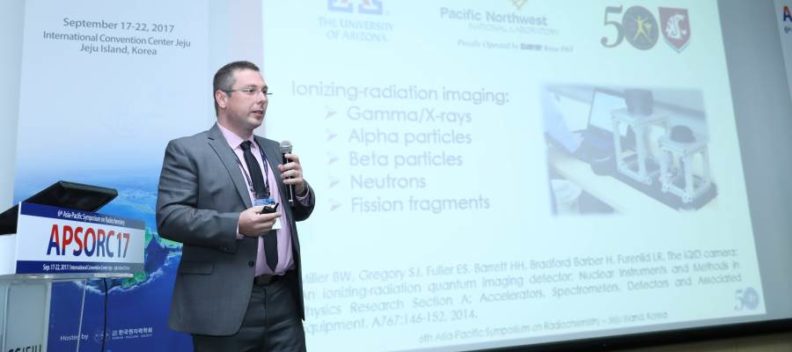
6th Asia-Pacific Symposium on Radiochemistry, Jeju Island, South Korea, September 17-22, 2017
Sergei Tolmachev and George Tabatadze attended the 2017 Asia-Pacific Symposium on Radiochemistry, and gave platform presentations on USTUR research.
Analysis of ‘high-fired’ plutonium oxide in tissues of occupationally exposed workers
Sergei Y. Tolmachev (USTUR), Elizabeth M. Thomas (USTUR), George Tabatadze (USTUR), Maia Avtandilashvili (USTUR)
The United States Transuranium and Uranium Registries (USTUR) studies actinide (Pu, Am, and U) biokinetics and tissue dosimetry by following up former nuclear workers with documented internal deposition of these radioactive elements. The USTUR research relies heavily upon postmortem autopsy findings and radiochemical analyses of donated tissues. The use of hydrofluoric (HF) acid is critical for the analyses of samples contaminated with highly insoluble plutonium material – ‘high-fired’ plutonium oxide (239PuO2). 239Pu activity concentrations were measured in lungs and thoracic lymph nodes from 291 occupationally exposed individuals. Plutonium insoluble material was present in about 50% of the analyzed respiratory tract tissues collected by the USTUR. [USTUR-0478-17A]
Full Abstract
Presentation Slides
Digital autoradiography of bone-seeking radionuclides in human
George Tabatadze (USTUR), Brian W. Miller (Univ. of Arizona), Sergei Y. Tolmachev (USTUR)
This paper describes the ionizing-radiation quantum imaging detector (iQID) system and its applicability for imaging of bone-seeking alpha-emitters. The United States Transuranium and Uranium Registries (USTUR) studies actinide (plutonium, americium, and uranium) biokinetics and tissue dosimetry by following up occupationally exposed individuals. Estimation of the micro-distribution of radionuclides in tissues is an important task to support biokinetic modeling and dose assessment. A newly developed iQID system was used to study radionuclide distribution in human bones. Results showed that iQID imaging approach is proven to be an effective method for micro-scale heterogeneous distribution studies, where traditional counting methods do not apply. [USTUR-0479-17A]